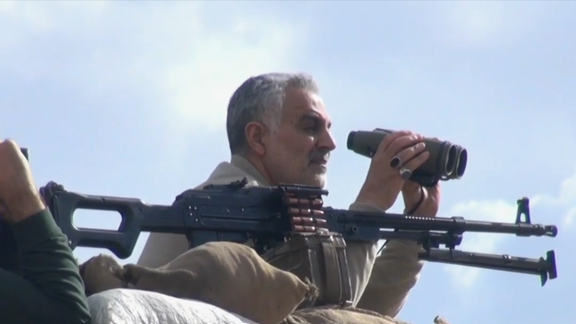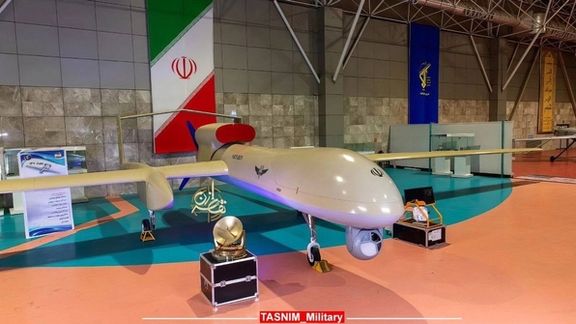Italy Considers Joining Red Sea Maritime Coalition, Source Says

Italy is considering joining a Western naval coalition meant to protect ships in the Red Sea from attacks by the Iran-aligned Houthis of Yemen, a source told Reuters on Monday.

Italy is considering joining a Western naval coalition meant to protect ships in the Red Sea from attacks by the Iran-aligned Houthis of Yemen, a source told Reuters on Monday.
US National Security Advisor Jake Sullivan told reporters earlier this month that Washington was in talks with various nations over forming a maritime task force for the Red Sea but did not give further details.
The Italian source, who asked not to be named due to the sensitivity of the matter, said Rome had been asked to join the operation and a decision would be made by the end of this week.
Yemen's Houthis have waded into the Israel-Hamas conflict by attacking vessels in vital shipping lanes and firing drones and missiles at Israel more than 1,000 miles from their seat of power in the Yemeni capital of Sanaa.
The attacks began in mid-November after Iran’s ruler Ali Khamenei called for denying commerce to Israel because of its military operation in Gaza.
The US, British and French navies have already strengthened their presence in the Red Sea to protect vessels from the risk of seizure or attack by the Houthis.
The Houthis, which rule much of Yemen, say the attacks are a show of solidarity with Palestinians and has pledged to continue until Israel stops attacking Gaza.
The attacks by the Houthis pose a threat to the global economy as they target the flow of supplies between Asia and the West and are driving up the cost of shipping goods through the Red Sea.

Amid reports of a possible US strike on Iran-backed Houthis, IRGC’s commander-in-chief taunted Americans on Sunday, claiming that they’d leave the region soon.
“The US and Israel are reliving their bitter experiences,” said Maj. Gen. Hossein Salami. “Did they find victory in their occupation of Afghanistan? Were they able to stay in Iraq after its occupation? They are gradually packing up to leave this land.”
Iranian officials have been increasingly bullish in the past few weeks, banking, it seems, on the Biden administration’s apparent reluctance to confront the regime and its proxies in the Middle East.
Since mid-October, Iran-backed militias have launched 100 attacks on US bases (or interests) in Iraq and Syria, while Yemen's Houthis –with Iranian drones and missiles– have forced five shipping giants to halt their traffic in the Red Sea, a major artery for global commerce.
The US response has been limited and largely defensive. A few IRGC-affiliated positions in Iraq and Syria have been targeted and some drones have been shot down before hitting commercial vessels or US warships. But the option of striking the Houthis has been crossed out so far by the Biden administration.
Instead, the US is trying to build an expanded maritime force involving Arab and other states to protect commercial shipping at the Red Sea, according to the Guardian.
The joint task force is yet to be announced. Whatever its brief, it’s hard to imagine the Arab states footing the Houthi bill, especially since the group has repeatedly (and starkly) warned against any such move. Even if a coalition is formed, the burden of military operation would fall on the United States and the alliance would remain a defensive force.
“If Saudi Arabia or UAE are part of a US coalition to bomb Yemen then we will destroy their oil and gas fields, " a Houthi spokesman said to France 24 earlier this month.
Houthis say they would continue their operations as long as Israel continues its bombardment of Gaza, in which the US government is seen as complicit.
“Muslim nations hold an endless grudge against these criminals and US officials don’t dare visit Islamic lands,” General Salami said, just hours before US Secretary of Defense Lloyd Austin arrived in Bahrain for his multi-day tour of the Middle East.
Austin will also visit Qatar and Israel, reportedly to continue discussing a timetable for ending the war’s most intense phase and define milestones for the war with Hamas.
On Monday, the UN security council will vote on a new resolution calling for an “urgent and sustainable cessation of hostilities” in Gaza –only days after President Biden warned Israel that it risked losing international support due to its “indiscriminate” bombing and killing of Palestinians.
Thousands of civilians have been killed in the Israeli onslaught on Gaza, which has flattened large parts of the Strip and displaced 85 percent of the population, according to international organizations.
“We will stand with the beloved Palestine to the end,” Salami said Saturday, betraying the fact that the regime in Iran sees the current conflict as a battle in a much longer war, in which the main objective is not military gains but to isolate Israel and raise Hamas’ standing among Palestinians.
And to that end, Salami and his allies can see some success, if not victory.
“Israel will not win this war if its operations destroy the prospect of peaceful co-existence with Palestinians,” David Cameron and Annalena Baerbock, the foreign ministers of the UK and Germany, wrote in the UK's Sunday Times.
Lending their voice to growing calls for a “sustainable” cease-fire, they said “the sooner it comes, the better. The need is urgent.”
The Israeli government, however, seems to be determined to continue fighting to dismantle Hamas. An Israeli military spokesman said on Monday, “it is important for me to make clear, the IDF [Israel army] is determined to complete the task of dismantling Hamas.

One of Iran’s cyber espionage tactics to support Hamas is using Hebrew-speaking women to gather intelligence from Israeli soldiers, Iran International has learned.
According to our sources, several of these women are based in the religious city of Mashhad in northeastern Iran and use social media to seduce Israeli soldiers by sending nude images or provocative footage of themselves in an effort to gather military intelligence.
While the screen names and details of these women are presumably fake, the explicit photos and videos they shared with Israeli soldiers appear to be genuine. To entice their victims, these cyber operatives sent photos and videos of themselves wearing revealing clothing, heavy makeup, and, in some cases, nude photos.
According to Iran International's investigations, members of this IRGC-run catfishing cell use a wide range of fake profiles across various online platforms, managing at least 22 different avatars in some instances.

Two of these Mashhad-based 'swallows', identified as Samira Baghbani Torshizi and Haniyeh Ghaffarian, used their real pictures but posed as Israeli soldiers in their attempt to seduce and extract information from real Israeli soldiers. Torshizi, whose screen name was “Or Olga,” had claimed to be a Jewish immigrant residing in London. She had asked a soldier if she could see pictures of a vehicle he used in the army, wondering if “it is secret or classified.”
Ghaffarian had also tried to make an emotional bond with an Israeli soldier through sending photos and videos of herself.
Last month, the IDF announced that it foiled a network of Hamas supporters using fake social media profiles to extract information from the IDF forces, including information on the units that would be sent into the Gaza Strip and the timing of dispatches or operations underway as part of the Israel’s offensive against Iran-backed Islamist militia Hamas.
The accounts made contact with troops and “managed a kind of romantic relationship… through correspondence, voice recordings and video calls” in order to gather information for Hamas, the IDF said. The number of potential victims was estimated to be between hundreds and thousands of soldiers, including reservists. The IDF said the faux social media profiles had additional fake profiles posing as relatives and friends, in order to “strengthen their credibility.”
"In one case, the operative asked for the name of the soldier’s base and inquired, 'When are you entering Gaza?' In another instance, a profile named 'Shira Simon' claimed to be an intelligence officer to an officer in the Givati brigade, subsequently asking why he was on a base in the Golan Heights. The soldier replied that he was there for training."
Last year, Israel's internal security service Shin Bet also revealed a similar case, an Iranian operator working under the name of Sara Puppi, pretending to be a young Jewish girl with connections and business in Israel. In February, Twitter and Facebook suspended pages and profiles of an Iranian disinformation unit that was targeting nationalist and ultra-religious Jews in Israel.
Sexpionage is a historically documented phenomenon and was one of the methods of choice for the Soviet intelligence. In the Soviet Union, female agents tasked with employing such tactics were called 'swallows,' while their male counterparts were referred to as 'ravens.' The Islamic Republic has famously used swallows to honeytrap or blackmail its critical figures.
In one of the major recent cases, Iran’s intelligence apparatus used one of these so-called swallows to lure and consequently abduct Habib Asyud (also known as Habib Chaab) -- an Iranian-Arab leading separatist – in Istanbul. He was smuggled to Tehran in November 2020 and was hanged earlier this year.
Iran supports Hamas but says it did not play any role in the Islamist militants' October 7 terror attack that triggered the current crisis. Iran also backs the Hezbollah, a Lebanese militant group that has deep ties with Hamas and Islamic Jihad, another Palestinian faction in Gaza that is also backed by Iran.

Iranian vice president for legal affairs announced that the regime has initiated the process of filing a complaint for the killing of former IRGC-Quds commander Qasem Soleimani.
Soleimani was assassinated in a US drone strike near Baghdad International Airport on January 3, 2020, under the order of then-President Donald Trump.
The official, Mohammad Dehghan stated, "In April, we will register our complaint against the US government. The US government has allowed the assassination to take place against international conventions, and Trump and other US officials who violated the conventions have not been prosecuted." He emphasized that figures like Soleimani are considered internationally protected, claiming he had been on a "diplomatic mission" in Iraq at the time of the assassination.
Soleimani was the Iranian regime's top military and intelligence operative in the Middle East, establishing proxy militant groups and overseeing Iran's military involvement in Syria.
Dehghan noted a preliminary step requiring six months to pass from the time of warning the United States, and April 2024, when the complaint will be registered in The Hague.
Iranian Foreign Minister Hossein Amir-Abdollahian had previously disclosed in January that nearly 60 US officials were blacklisted by Tehran for their involvement in Soleimani's assassination.
Iran's President Ebrahim Raisi and Supreme Leader Ali Khamenei have consistently vowed revenge for the killing of Soleimani. Since Soleimani's death, a member of the Iranian Revolutionary Guard has been charged with planning to assassinate former US National Security Advisor John Bolton and former Secretary of State Mike Pompeo as retaliation for the military commander's killing.

Debris from a downed drone killed a civilian in the Odesa region after Ukraine's air force said it had destroyed 20 drones that Russia launched overnight.
Air defense systems destroyed nine Iran-made attack drones over Odesa, the region’s Governor Oleh Kiper said on the Telegram messaging app, calling it the third Russian air assault on the region in the past week.
Russia has been launching swarms of Iranian drones against infrastructure and civilian targets in Ukraine since October 2022. The drones are also used during missile attacks to overwhelm Ukrainian air defenses. Western countries have sanctioned dozens of individuals and entities involved in the supply of the kamikaze weapons.
"However, one of the downed drones fell into a residential area in Odesa district and exploded," Kiper said, adding that several houses were damaged, and one person was found dead in one of them afterwards.
The air force said its defense systems destroyed a cruise missile in addition to the drones. It said, without providing details, that Russia also launched an Iskander ballistic missile that "did not reach" its target.
The Russian air weapons were destroyed over Odesa, Kherson, Zaporizhzhia and Khmelnitskyi regions, the air force said.
On Saturday, the southern Ukrainian city of Kherson was hit by Russian drone attacks, local authorities reported.
The regional military administration said that one doctor was injured when the debris from a shot down an Iranian Shahed drone rained down on the hospital building in the port city.
Ukraine’s Operational Command South reported that it shot down nine Iranian-made Russian-operated drones over the Kherson region.
With reporting by Reuters, AP

A Sukhoi 22 fighter jet belonging to the Islamic Revolutionary Guard Corps (IRGC) crashed in Iran's southern Fars province on Saturday, according to state-run media.
The Director General of Airports in Fars Province confirmed the incident, stating that the crash occurred near Lake Parishan in Kazerun.
The semi-official ISNA news agency reported that the aircraft, described as "training-military type," crashed due to technical failure. The pilot managed to eject using a parachute, and there were no fatalities or injuries.
However, In an interview the governor of Kazerun confirmed that the pilot is currently hospitalized, suffering from a pelvic bone fracture.
The Sukhoi 22 is a single-seat bomber fighter aircraft manufactured in Russia, with the majority of the aircraft in the possession of the IRGC, originally owned by Iraq that Saddam Hussein sent to Iran not to lose them to US attacks.
The incident follows a similar one in August last year when another Sukhoi 22 fighter jet of the IRGC crashed at the Shiraz airbase, attributed to technical failure. In November 2017, in Sarvestan County, Fars Province, another aircraft of the same type crashed, resulting in the death of the pilot.
Aircraft accidents are not limited to the IRGC in Iran. In May 2022, two fighter jets of the Islamic Republic of Iran Army crashed within a few days, with one incident occurring in Esfahan Province, resulting in the death of the pilot and co-pilot.
Over recent years, several aviation accidents have led to the loss of military commanders and personnel. Ahmad Kazemi, the commander of the Ground Forces of the IRGC, lost his life in an aviation accident near Urmia on January 9, 2006.